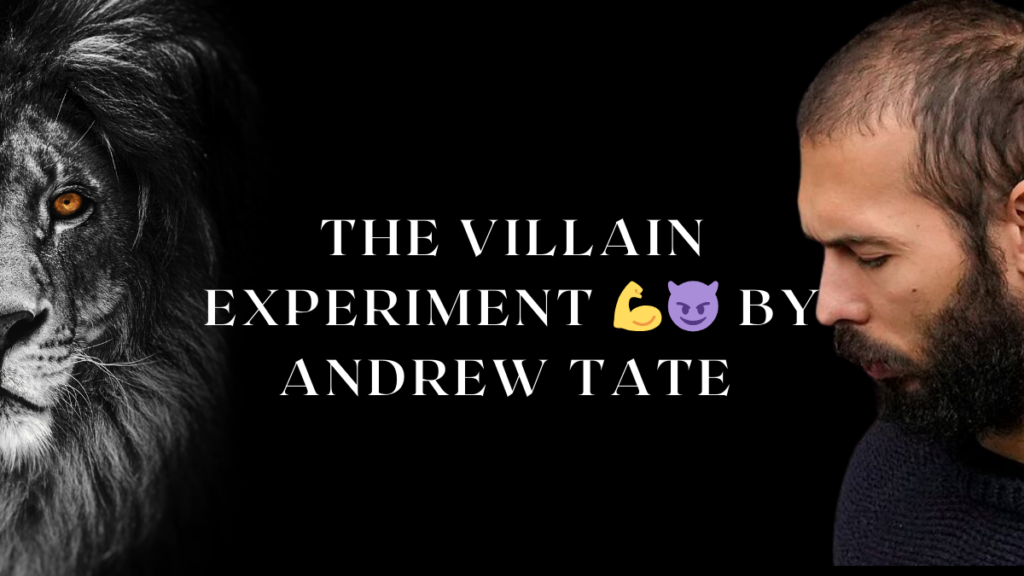We all want to be the heroes of our own stories, right? But every hero needs a villain, and sometimes, the most powerful villain we face is ourselves – or rather, a version of ourselves that we haven’t yet become.
This is where the “Villain Experiment” comes in. 🤯
This experiment, outlined in the source material, is a powerful tool for self-improvement. It’s about identifying the areas where you’re holding yourself back and then creating a sort of “arch-nemesis” who embodies all the qualities you wish you possessed.
What is the Villain Experiment? 🤔
The Villain Experiment is a training designed by Andrew Tate to help you develop an “iron mindset”. The core concept is simple:
- Identify Your Weaknesses: What are the things you want to do but struggle with? Are you afraid of approaching new people? Do you struggle to stick to a workout routine? Write those down. 📝
- Create Your Villain: Now, imagine a version of yourself who excels in all those areas. This isn’t about comparing yourself negatively to others. It’s about envisioning your own potential unleashed. This is your villain. 😈
- Get Specific: This isn’t just some vague idea. The source material emphasizes creating a detailed profile of your villain:
- What does he look like?
- How does he carry himself?
- What are his habits?
- How does he approach challenges?
Practical Steps for the Villain Experiment 👣
Here’s how to put this into practice:
The List: Grab a notebook and start listing the qualities of your villain. Be specific. Instead of “He’s confident,” write, “He walks into a room with his head held high and introduces himself to new people.”, “He does what needs to be done, regardless of motivation or feelings.”, “He makes time to read important books, even when the speaker claims, I don’t have time”, “He does not waste time on unimportant activities like watching television.”, “He maintains a healthy diet and avoids junk food”, and ” He never gives up, even when faced with challenges or setbacks.” Like these aim for at least 25-30 qualities.
Visualisation: Close your eyes and picture this person. Imagine encountering him in different situations. How does he act? How does he make you feel? This step is crucial because it makes your villain feel real.
The Daily Battle: Now comes the hard part. Every time you face a challenge, ask yourself: “What would my villain do?” If the answer is “He’d hit the gym,” guess what? Time to lace up those trainers. You’re not competing against anyone but yourself – the you, you’re capable of becoming.
Why This Works: Turning Envy into Fuel 🔥
The brilliance of the Villain Experiment is that it taps into a powerful motivator: competition. But instead of competing with others, you’re competing with the best possible version of yourself.
This process can be incredibly effective because it transforms negative emotions like envy or inadequacy into fuel for growth.6 When you feel like giving up, remember your villain. He wouldn’t quit. He’d find a way. And so can you.
Conclusion
In conclusion, the Villain Experiment By Andrew Tate offers a unique and empowering approach to self-improvement by reframing competition as an internal challenge against the best version of yourself. By identifying your weaknesses, creating a clear image of your “villain,” and using this version of yourself as a guide, you unlock new levels of discipline and determination. Instead of being driven by external comparisons, you fuel your growth with personal ambition. Remember, every battle is an opportunity to choose the path of progress—your villain wouldn’t back down, and neither should you.

